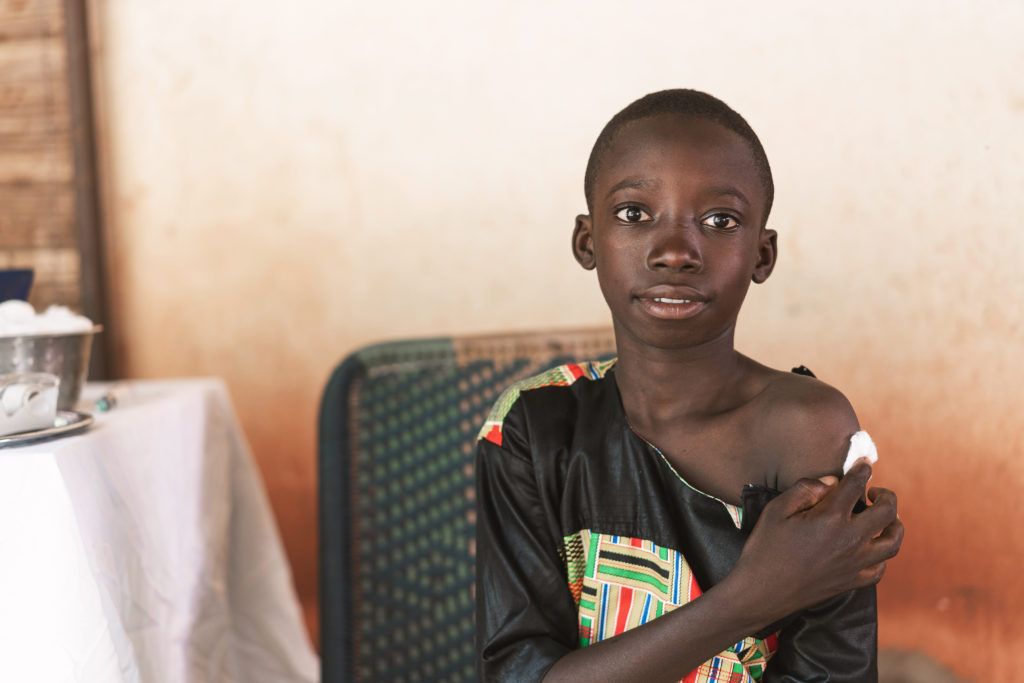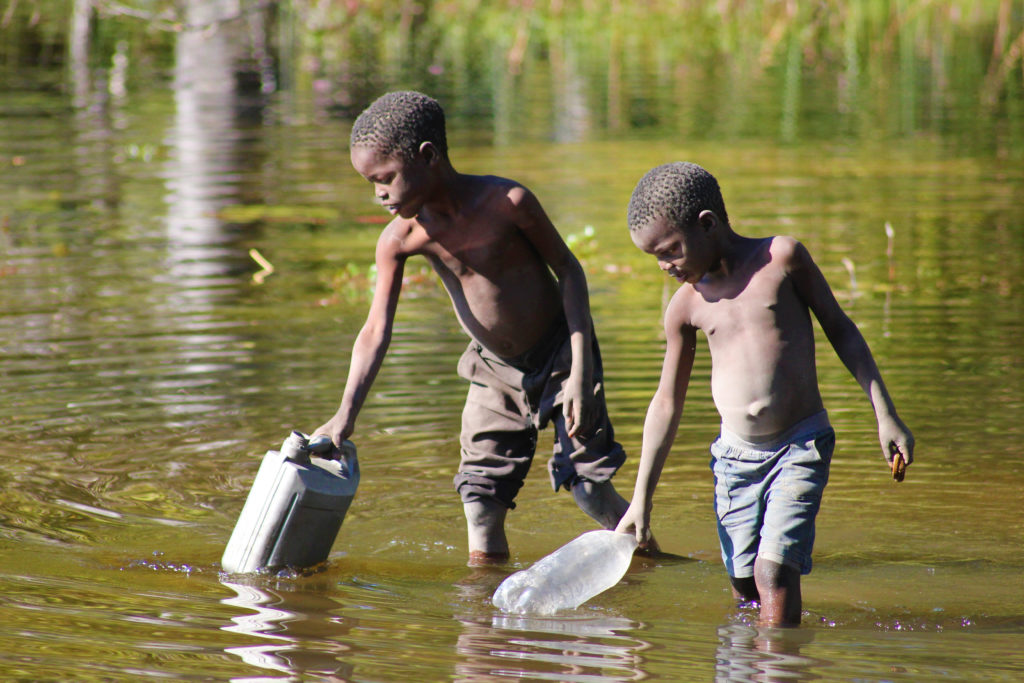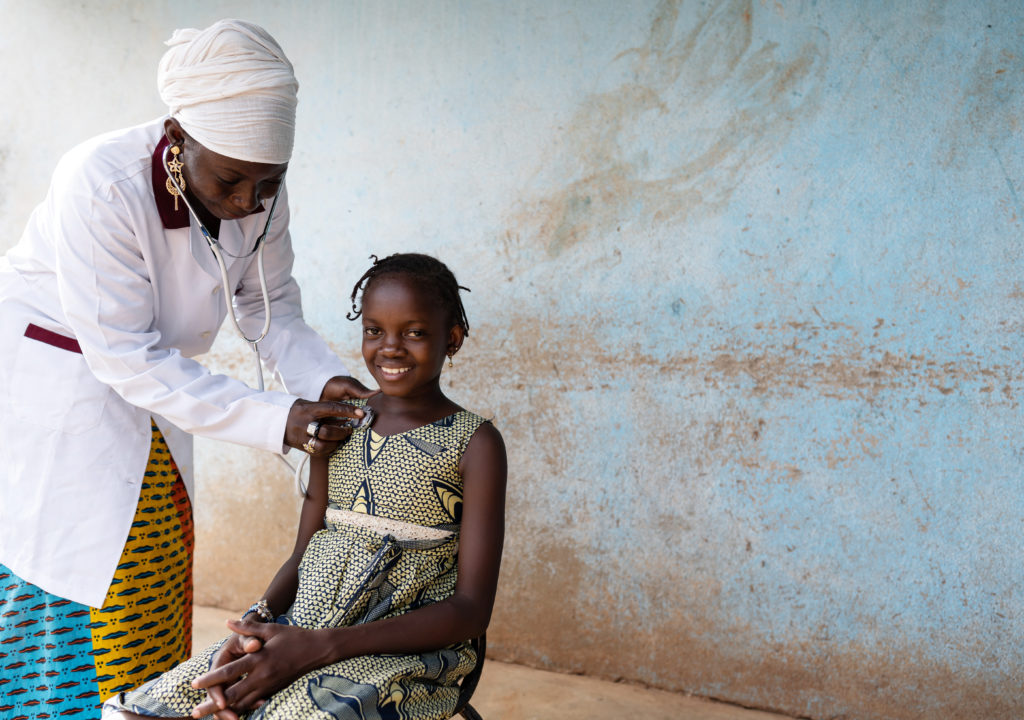Childhood, a pivotal stage marked by developing immune systems, exposes children to various illnesses. Alongside limited medical access, factors like malnutrition, insufficient vaccination coverage, and inadequate hygiene practices contribute to heightened childhood illnesses and mortality. Ensuring children’s health and reducing illness burden therefore requires implementing broader public health interventions. Taking these steps is vital for effectively reducing the prevalence of fatal illnesses among children.

Common childhood diseases
Globally, nearly half (45%) of deaths in children under five result from preventable causes such as malaria (8%), diarrhea (18%), and pneumonia (19%). Of these preventable deaths, 41% occur in sub-Saharan Africa, highlighting the severity of the issue in developing nations (Batura N et al., 2022).
Despite the scientific understanding and preventability in cases of malnutrition, pneumonia, diarrhea, and malaria, these diseases continue to pose a significant threat to children’s lives due to barriers such as limited access to healthcare, inadequate health coverage, and high healthcare costs. This situation is particularly distressing because these diseases are entirely preventable with adequate political and economic support (Sackett P. G, 2008).
Malnutrition
Malnutrition arises when the body lacks essential vitamins and minerals vital for healthy organ function. Common signs of malnutrition in children include stunted growth, thinness, bloating, fatigue, and weakened immune systems. Nutritional deficiencies can affect various bodily systems and sensory functions, leading to skin problems like dryness, increased bruising, rashes, and changes in skin pigmentation (Johns Hopkins Medicine, n.d.).
Worldwide, about 45 million children under the age of five experience acute malnutrition, signifying their weight inadequately corresponds to their height. In 2021, despite significant strides in reducing child mortality rates, approximately one child or adolescent died every 4.4 seconds, totaling around five million deaths among this age group, with malnourishment contributing to nearly half of these fatalities (Malteser International, n.d.).
According to data from the World Health Organization in 2020, the death rates due to undernourishment were notably high in developing countries. Somalia ranked highest with a death rate of 42.27 per 100,000, followed by Mali at 35.74, Eritrea at 26.52, and Djibouti at 25.18 (World Life Expectancy, 2020).
Specifically, in Somalia, a 300% increase in children receiving treatment for severe malnutrition during the initial six months of 2022 was reported due to the severe drought gripping the nation. Amidst an ongoing devastating drought, Somalia teeters on the brink of famine, sparking concerns of a potential recurrence of the 2011 famine that claimed 260,000 lives, nearly half of whom were children under the age of five (ReliefWeb, 2022).
Pneumonia
Pneumonia, an acute respiratory infection affecting the lungs, is caused by various infectious agents like viruses, bacteria, and fungi. Its transmission occurs through multiple routes: inhaling viruses and bacteria found in the nose or throat, airborne droplets from coughs or sneezes, and potential spread through blood, notably around childbirth. While it impacts children and families globally, mortality rates are notably elevated in southern Asia and sub-Saharan Africa (WHO, 2022).
Annually, pneumonia, claims the lives of approximately 700,000 children under the age of five and remains the leading infectious cause of death in this demographic. Despite its preventable nature and manageable treatment using antibiotics, children continue to die due to pneumonia every minute in various parts of the world. This disease disproportionally affects disadvantaged populations, with the situation exacerbated by undernutrition, inadequate access to clean water, and limited healthcare access (UNICEF, n.d.).
Understanding and researching diseases is paramount for effective treatment, as it allows us to unravel the intricate factors influencing demographic disparities and diverse responses to interventions across populations worldwide.
However, research on childhood pneumonia has been significantly underfunded, receiving less than 3% of funding allocated to infectious disease research between 2000 and 2015. Most of this funding was directed toward vaccine development, overlooking vital aspects such as prevention, diagnosis, and treatment. Alarmingly, low-income and middle-income countries, where 99% of child pneumonia deaths happen, received only 8% of pneumonia-related research funding (Steele A. et al., 2023).
Diarrhea
Diarrhea, characterized by frequent and loose bowel movements, can cause symptoms like loss of appetite, vomiting, weight loss, or fever in affected children. Prolonged or severe cases of diarrhea can lead to significant fluid loss (dehydration), particularly threatening for infants and young children who can become dehydrated rapidly, sometimes within a day. Severe dehydration poses severe risks, including seizures, brain damage, and even death (Consolini M. D, 2023).

The deaths caused by diarrheal diseases are closely linked to a country’s wealth. Lower-income areas often face higher risks due to factors like limited access to clean water, availability of the rotavirus vaccine, undernutrition, and stunted growth, all contributing to the prevalence of diarrheal diseases (Dadonaite B, 2019). In the poorest nations, more than 100 children out of 100,000 die from these diseases each year, rising to over 300 per 100,000 in places like Madagascar, Chad, and the Central African Republic (Dadonaite B, 2019). In contrast, wealthier countries, particularly in Europe and some parts of Asia, report very low rates, often below 1 per 100,000 annually (Dadonaite B, 2019).
The global prevalence of childhood diarrheal disease is staggering, hitting nearly 1.7 billion cases each year. It’s the second leading cause of death in children under five, claiming around 525,000 young lives annually. When it comes to understanding the impact and prevalence of diarrhea globally, it remains crucial to acknowledge the disease is both preventable and treatable (WHO, 2017).
Access to safe drinking water, along with proper sanitation and hygiene practices, can prevent a significant number of these cases. Particularly, malnourished children with weakened immune systems are at higher risk of life-threatening diarrhea, underscoring the urgent need for targeted interventions in these vulnerable populations (WHO, 2017).
Malaria
Malaria is a severe illness common in areas with limited resources. It’s caused by parasites transmitted through mosquito bites. The disease progresses from the mosquito bite to invading liver cells and later spreads into the bloodstream, causing symptoms (Cohee M. L. et al, 2017).
In children with low immunity, malaria often manifests as a high fever, sometimes accompanied by chills and headaches. Every day, approximately 3000 children succumb to malaria, making it one of the leading causes of death among children under five in Africa (Stauffer W. et al., 2023).
The World Health Organization’s 2021 World Malaria Report disclosed an alarming rise in malaria fatalities, reaching 627,000 in 2020, the highest in nearly ten years. Notably, disruptions caused by the COVID-19 pandemic contributed to a surge of 69,000 malaria deaths between 2019 and 2020 (Malaria No More UK, n.d.).
While collaborative efforts managed to avert a worst-case scenario of doubling malaria deaths in sub-Saharan Africa, indicating the efficacy of investments in prevention and control, the 12% increase in malaria-related deaths underscores the tragic loss of life from a preventable and treatable disease (Malaria No More UK, n.d.).
Prevention of childhood diseases

Over the last two decades, sub-Saharan Africa witnessed remarkable progress in reducing child mortality rates. The region saw a substantial decline in the under-five mortality rate, dropping from 177 deaths per 1,000 live births in 1990 to 98 per 1,000 in 2012 (African Development Bank Group, 2014).
For instance, Niger lowered its child mortality rate from 226 in 1998 to 128 in 2009, showing a 5.1% annual decline, attributed to measures such as malaria prevention, improved nutrition, vitamin A supplements, and enhanced treatment for diseases like diarrhea and pneumonia. Increasing childhood immunization coverage played a pivotal role in sub-Saharan Africa‘s notable gains in child survival, even within countries with weaker healthcare systems (African Development Bank Group, 2014).
Similarly, Senegal acknowledged the importance of engaging diverse stakeholders, especially civil society, to curb child mortality. This early involvement led to amplified demand, enhanced health service availability, and stronger advocacy. Senegal‘s highly successful vaccination programs significantly contributed to its progress in reducing child mortality. From 2000 to 2015, the country witnessed a remarkable 56% decline in its under-five mortality rate, underlining the effectiveness of these initiatives (EGH, n.d.).
While it is a step towards progress that certain countries have made strides in reducing child deaths caused by preventable illnesses, there remains significant work to be done. All nations should prioritize health equity by establishing universal health coverage, enabling all children to access vital medical services without financial barriers.
To achieve this goal, countries must collaborate across sectors, addressing inequalities and social determinants of health. Additionally, the international community can assist by providing support and resources to help countries establish and enhance these essential health services for children in need (WHO, 2020).
Written by Lidija Misic
Internally proofread by Aditi Partha
Last edited on January 9, 2024
Bibliography:
African Development Bank Group (2014), Child mortality rates in Sub-Saharan Africa fall dramatically. Retrieved from African Development Bank Group at https://www.afdb.org/fr/news-and-events/child-mortality-rates-in-sub-saharan-africa-fall-dramatically-13279. Accessed on January 9, 2024.
Batura N. et al. (2022), Costs of treating childhood malaria, diarrhoea and pneumonia in rural Mozambique and Uganda. Retrieved from BioMed Central at https://malariajournal.biomedcentral.com/articles/10.1186/s12936-022-04254-y. Accessed on January 9, 2024.
Cohee M. Lauren et al. (2017), Malaria in Children. Retrieved from National Library of Medicine at https://www.ncbi.nlm.nih.gov/pmc/articles/PMC5733786/. Accessed on January 9, 2024.
Consolini M. Deborah (2023), Diarrhea in Children. Retrieved from MSD Manual at https://www.msdmanuals.com/home/children-s-health-issues/symptoms-in-infants-and-children/diarrhea-in-children. Accessed on January 9, 2024.
Dadonaite Bernadeta (2019), More than half a million children die from diarrhea each year. How do we prevent this? Retrieved from Our World in Data at https://ourworldindata.org/childhood-diarrheal-diseases#:~:text=The%20death%20rate%20from%20diarrheal%20diseases%20in%20many%20of%20the,higher%20than%20300%20per%20100%2C000. Accessed on January 9, 2024.
EGH (n.d.), Under-Five Mortality Reduction in Senegal. Retrieved from Exemplars in Global Health (EGH) at https://www.exemplars.health/topics/under-five-mortality/senegal. Accessed on January 9, 2024.
Johns Hopkins Medicine (n.d.), Malnutrition. Retrieved from Johns Hopkins Medicine at https://www.hopkinsmedicine.org/health/conditions-and-diseases/malnutrition#:~:text=Symptoms,mood%20and%20other%20psychiatric%20symptoms. Accessed on January 9, 2024.
Malaria No More UK (n.d.), New Figures Show a Dramatic Rise in Malaria Deaths. Retrieved from Malaria No More UK at https://malarianomore.org.uk/new-figures-show-dramatic-rise-malaria-deaths#:~:text=Children%20under%205%20are%20especially,dying%20every%20minute%20from%20malaria. Accessed on January 9, 2024.
Malteser International (n.d.), Malnutrition in children. Retrieved from Malteser International at https://www.malteser-international.org/en/current-issues/hunger-and-malnutrition/malnutrition-in-children.html. Accessed on January 9, 2024.
ReliefWeb (2022), Somalia: Severe malnutrition among children soars 300% since January. Retrieved from ReliefWeb at https://reliefweb.int/report/somalia/somalia-severe-malnutrition-among-children-soars-300-january. Accessed on January 9, 2024.
Sackett P. Gene (2008), CHAPTER 1 – Developmental Disabilities and Primate Models Defined. Retrieved from ScienceDirect at https://www.sciencedirect.com/science/article/abs/pii/B9780123737434500035. Accessed on January 9, 2024.
Stauffer William et al. (2003), Diagnosis and Treatment of Malaria in Children. Retrieved from Clinical Infectious Diseases at https://academic.oup.com/cid/article/37/10/1340/451166. Accessed on January 9, 2024.
Steele Angharad et al. (2023), Major gaps in childhood pneumonia research priorities remain. Retrieved from The Lancet Respiratory Medicine at https://www.thelancet.com/journals/lanres/article/PIIS2213-2600(23)00375-2/fulltext. Accessed on January 9, 2024.
UNICEF (n.d.), Childhood diseases. Retrieved from UNICEF at https://www.unicef.org/health/childhood-diseases. Accessed on January 9, 2024.
WHO (2020), Children: improving survival and well-being. Retrieved from World Health Organization at https://www.who.int/news-room/fact-sheets/detail/children-reducing-mortality. Accessed on January 9, 2024.
WHO (2017), Diarrhoeal disease. Retrieved from World Health Organization at https://www.who.int/news-room/fact-sheets/detail/diarrhoeal-disease. Accessed on January 9, 2024.
WHO (2022), Pneumonia in children. Retrieved from World Health Organization at https://www.who.int/news-room/fact-sheets/detail/pneumonia. Accessed on January 9, 2024.
World Life Expectancy (2020), World Health Rankings: Malnutrition. Retrieved from World Life Expectancy at https://www.worldlifeexpectancy.com/cause-of-death/malnutrition/by-country/. Accessed on January 9, 2024.

